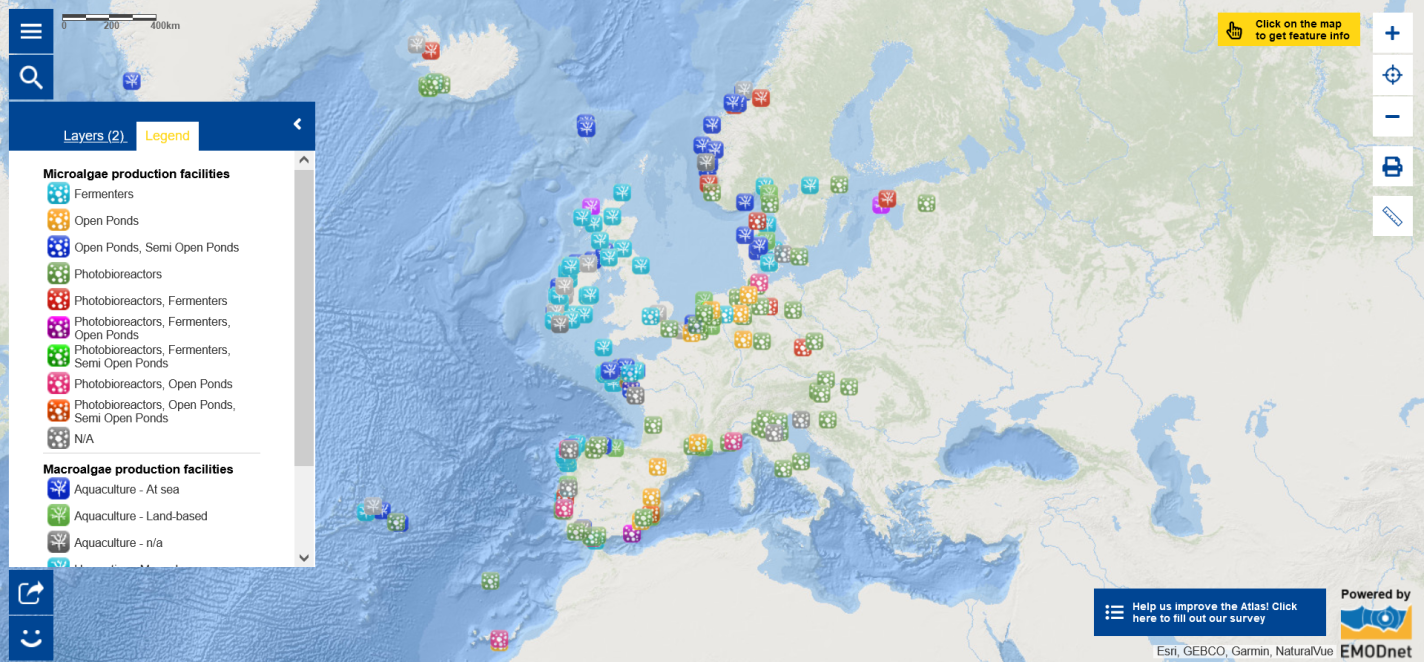Map of the Week – Algae production facilities

This week, the first ever EU Algae Awareness summit is taking place in Paris. This initiative, largely supported by the European Commission, aims at raising awareness among Member States’ administrations as well as the public about the benefits algae cultivation may bring to national and regional economies, to people, and to the regeneration of the Ocean. [1] The summit started on 5 October 2023 and will last for three days. It is co-organised by the European Commission, the French Government and the Global Seaweed Coalition (UN Global Compact). The first two days consisted mainly of high-level panel conversations and discussions amongst experts with the aim to advance this growing sector of the Blue Economy. On Saturday 7 October, the Maison de l’Océan will be open to the general public and will be hosting an exhibition structured around all the potential uses and applications of algae products across our economy.
In light of this event, the Map of the Week shows the macroalgae and microalgae producing facilities across Europe, categorised by production methods. For macroalgae, this includes harvest and aquaculture. For microalgae, this includes photobioreactors, open ponds and fermenters as well as combinations thereof. As explained in the description of the map layer on microalgae production facilities in the Atlas, microalgae are microscopic plants, typically found in freshwater and marine systems, living in both the water column and sediment, while macroalgae are the more commonly known seaweeds.
Did you know that the seaweed food industry is currently valued at around 9 billion US dollars per year and is recognised as the world’s fastest growing food sector? [2] As advocated by the Global Seaweed Coalition (GSC), in an age where the space available on land for food production is becoming scarce, seaweed food production has the potential to add 10% to the present global food supply. The potential applications and uses of seaweeds and microalgal biomass span across many more sectors than just the food industry [3]. To this day, this includes bio-based plastics, cosmetics, plant-based fertilisers, biofuels, pharmaceuticals and other emerging sectors like paper production, construction or even clothing.
The European commission has recently taken action to promote and support developments in algae aquaculture across the European Union. Among other initiatives, the EU Algae initiative was adopted in November 2022. It identifies 23 actions that contribute to the development of a robust and sustainable European Union algae sector. A European Algae Stakeholder platform EU4Algae was created with the aim to scale up a regenerative, resilient, fair and climate friendly algae industry, as well as bring more novel algae species to the market.
Wish to know more?
- Explore the Map of the Week by clicking on the macroalgae and microalgae producing facilities to get more information.
- Watch the Euronews Ocean episodes on seaweed farming and microscopic algae .
- If you are in Paris, take part in the activities organised at the Maison de l’Océan on 7 October.
The data in this map are provided by EMODnet.
- https://maritime-forum.ec.europa.eu/contents/first-ever-eu-algae-awareness-summit_en#:~:text=The%20first%20ever%20EU%20Algae%20Awareness%20Summit%20will%20be%20held,de%20l'Oc%C3%A9an%20in%20Paris.
- https://www.safeseaweedcoalition.org/the-seaweed-revolution/#intro
- https://oceans-and-fisheries.ec.europa.eu/publications/communication-commission-towards-strong-and-sustainable-eu-algae-sector_en
